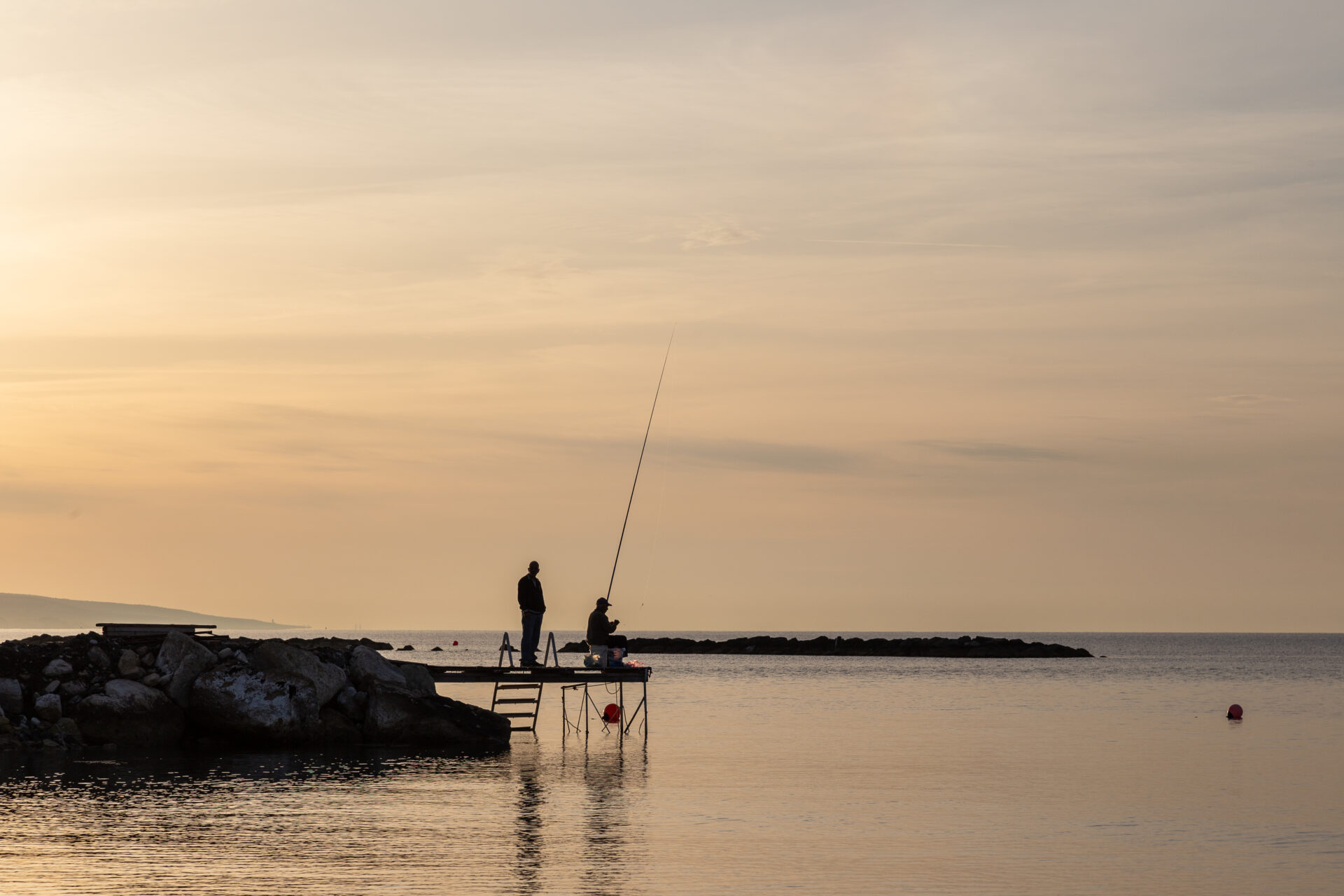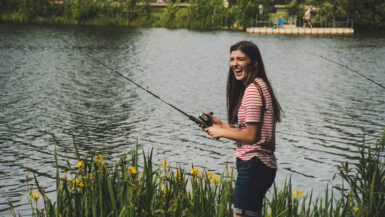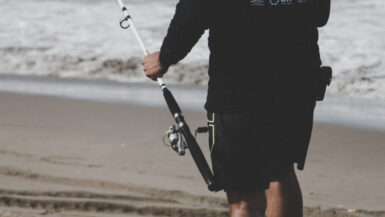Fishing in overcast weather can be tricky, but with the right strategies and techniques, it’s possible to have a great day out on the water catching bass. Whether you are a novice or an experienced angler, understanding the fundamentals of fishing in such conditions is key to success. In this article, we’ll discuss how to fish for bass in overcast weather and provide useful tips to help you maximize your chances of reeling in a catch. So grab your tackle and let’s get started!
Gear and Baits
Overcast weather can be a great time for anglers to catch bass. The cooler temperatures and darker skies can make bass more comfortable feeding than in sunny conditions. To make the most of your outing, it’s important to know the best strategies for fishing for bass in overcast weather.
Ideal Fishing Zones
When fishing for bass in an overcast sky, you’ll want to keep an eye out for areas with abundant vegetation, structure, and cover. These areas create good hiding spots and provide a plentiful food supply to attract bass. Casting near or around laydowns, rock piles, or weed beds is a great way to find bass in overcast weather.
Selecting the Right Gear and Baits
The right gear and baits can make a big difference in your success when fishing for bass in an overcast sky. Lure options like spinnerbaits, crankbaits, and topwater baits are great choices for this type of weather. Darker colored lures also tend to be more effective, such as black, blue, or purple. If there is a light rain, you may also want to consider adding a soft plastic lure to your arsenal. Additionally, it’s important to use tackle that is appropriate for the bass you are targeting – lighter tackle for smaller bass and heavier tackle for larger bass.
How to Present Your Baits
To maximize your chances of success, it’s important to know how to properly present your baits. When fishing for bass in overcast weather, try to keep your casts as close to structure and cover as possible. Additionally, make sure to vary the speed of your retrieve. Bass may be more lethargic in overcast weather, so a slower retrieval speed may be more effective. Lastly, pay attention to how the bass are feeding and adjust your presentation accordingly.
Adjusting Your Strategy
Fishing for bass in overcast weather is a great way to have a successful outing. By selecting the right gear, baits, and lures and adjusting your presentation and retrieve, you’ll be able to more effectively catch bass in these conditions. Don’t be afraid to adjust your strategy if you’re not having success – often times a change in approach can make all the difference.
Setting Up
Fishing for bass in overcast weather requires the right gear and tackle. A spinning reel and rod at least 6 feet long should be used with 10- to 12-pound monofilament line. Lures such as crankbaits and soft baits, as well as jigs, are good bets. The type of bait you use will depend on the bass fishing conditions. A selection of weights and leader material should also be included in your tackle box.
Finding a Spot
When fishing in overcast weather, look for areas with plenty of cover like docks, lily pads, and logs or fallen trees. Bass tend to hide out in such places, especially when the weather is gloomy. On sunny days, bass may move to deeper or more open water, however, when it’s overcast outside, the bass will be much closer to the shore.
Understanding Bass Behavior
Understanding the behavior of bass can help you find them more easily. When the water is cooler, bass become more active, so they are more likely to bite when it’s overcast outside. On the flip side, when the water is warmer, bass will become more lethargic, so they’re likely to be less likely to strike.
Casting Your Line
Once you have found the perfect spot, it’s time to cast your line. Take your time, maintaining a slow and steady pace. Bass can be shy, so taking your time is important to ensure a better chance at success. Cast your line near structure or cover, and give it time to settle.
Wait Patiently
Once your bait is in the water, all you can do is wait. Don’t be discouraged if you don’t get a bite right away – it takes patience and practice. Keep your eyes on your line and be sure to reel in as soon as you get a bite. If you’re lucky enough to get one, remember to practice safe and responsible catch-and-release to keep the bass population healthy.
Location
Bass fishing in overcast weather can be an ideal situation for catching larger fish. Overcast weather reduces the visibility of the fish and allows them to move more freely throughout the waters, making them more likely to be attracted to bait. Because of the decreased visibility and higher probability of strikes, fishing for bass in overcast weather can be more successful than during periods of direct sunlight.
Gear for Fishing in Overcast Weather
When selecting gear for fishing bass in an overcast weather, there are several important pieces of gear to consider. A light to medium action rod and reel combo, such as a spinning rod and reel, is recommended for bass fishing in an overcast environment. Additionally, lures and lines with a dark color scheme, such as black and dark blue, are ideal for reducing the visibility of the bait. This helps to keep the bass and other fish from spotting your gear, reducing the chances of the fish being alerted to the presence of your bait.
Location for Bass Fishing
The most important part of successful bass fishing in an overcast weather is selecting the right location. The ideal spot for bass fishing in this type of weather is an area with heavy vegetation and deep, dark waters. Bass are typically more active in waters with plenty of cover and protection from the sun, so locating a spot like this is essential for a successful day of fishing. Additionally, locating a spot with a clear view of the shoreline is important for monitoring the position and movements of the bass.
Presentation
When fishing in overcast weather, it is important to understand what the weather entails in order to ensure the best catches. Overcast weather is typically characterized by a grey sky and thick clouds, with air temperatures that are noticeably cooler than on days of full sunshine. The amount of rainfall or dryness of overcast days can vary greatly, so anglers should always be prepared for any weather condition.
Bass Feeding Habits in Overcast Weather
The cool temperatures and subdued lighting conditions of an overcast day make it an ideal time to fish for bass. Bass tend to be more active during this type of weather, as they are able to readily identify their prey without the glare of the sun. As such, it is important for anglers to strategize the type of bait and lure to use, as well as the best locations to fish for bass.
Locating Bass
Bass are likely to congregate in areas that offer shelter, such as near docks and around submerged structures. In areas with clear or lightly stained water, look for lantern or greenish-brown areas along steep drop-offs, as well as logs and other wooded structures. In areas with heavily stained water, look for bass in shallow cuts, such as grass beds and flooded timber.
Choosing the Right Bait
When fishing in overcast weather, anglers should choose lures or baits that are bright and easily visible. Brightly colored crankbaits, spinnerbaits, and topwater baits are some of the best choices for bass fishing in overcast conditions. Use lures that make a lot of noise and create turbulence in the water, as this will attract the attention of bass and entice them to take a bite.
Appropriate Retrieval Techniques
When fishing in overcast conditions, anglers should use retrieval techniques that are slower than when fishing in sunny weather. Slow-rolling or twitching the bait near the bottom will help trigger strikes from bass. As the bait gradually rises to the surface, anglers should pause and allow the bait to fall before retrieving it again. This technique will help to give bass more time to spot the bait and strike it.
Fishing for Bass in Overcast Weather
Fishing for bass in overcast weather can be a great way for anglers to land some big catches. By understanding the weather conditions, locating the bass, choosing the right bait, and using appropriate retrieval techniques, anglers can increase their chances of success when fishing for bass in overcast weather.
How to Make the Best of Bass Fishing in Overcast Weather
Fishing for bass in overcast weather can be a great option for experienced anglers and beginners alike. While the cloudy skies and rain can make the waters seem murky and unstable, there are a few tips that can help make the experience more enjoyable. Using bright, flashy lures is a good way to increase the visibility and attract more fish. Additionally, anglers should adjust their casts to deeper waters in order to increase the chances of finding trophy fish. Lastly, bait choice is very important in these conditions. Brightly colored and relatively large baits are better at attracting bass. By following these tips, bass fishing in overcast weather can still be a successful and enjoyable activity.





Leave a reply